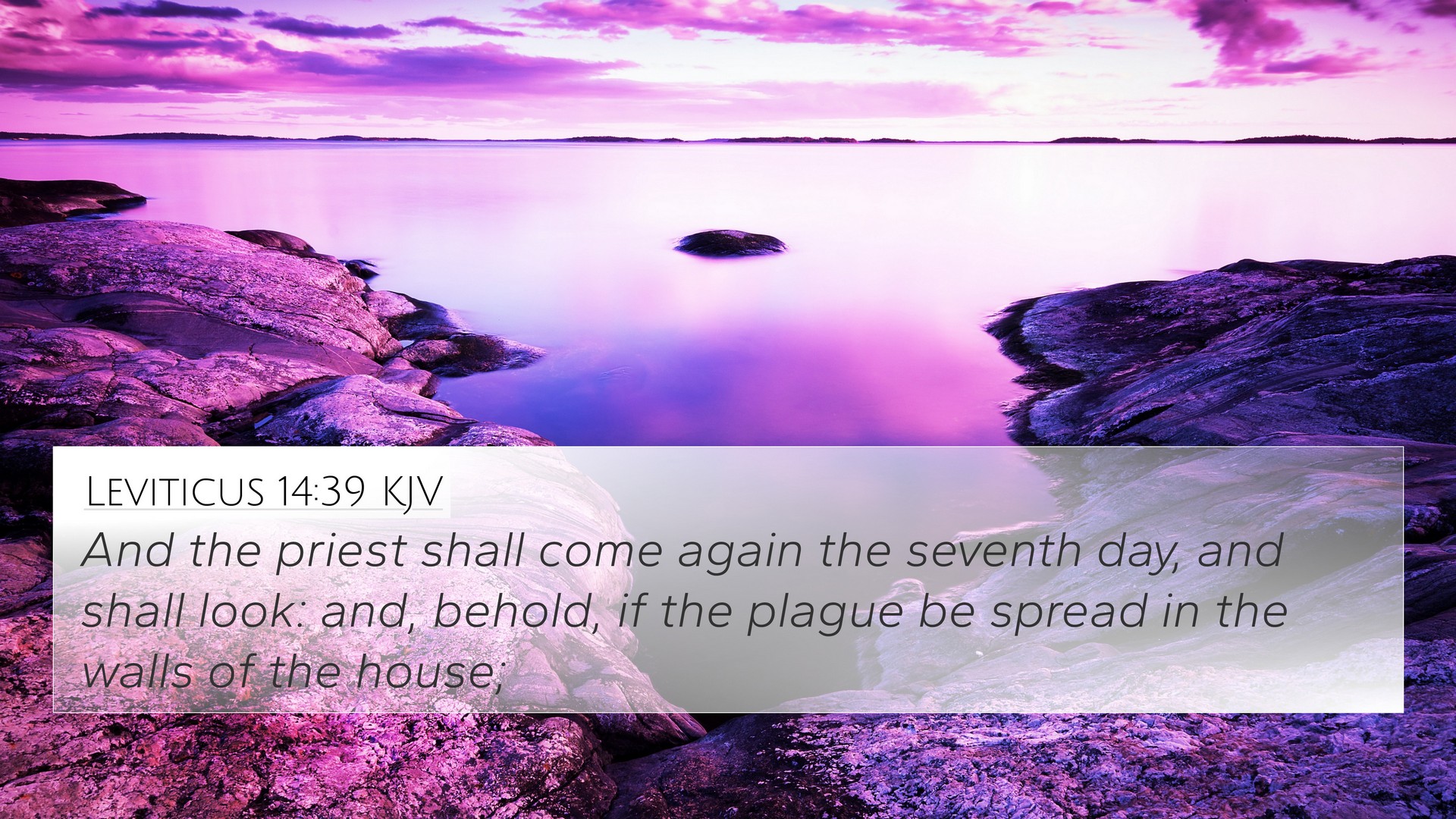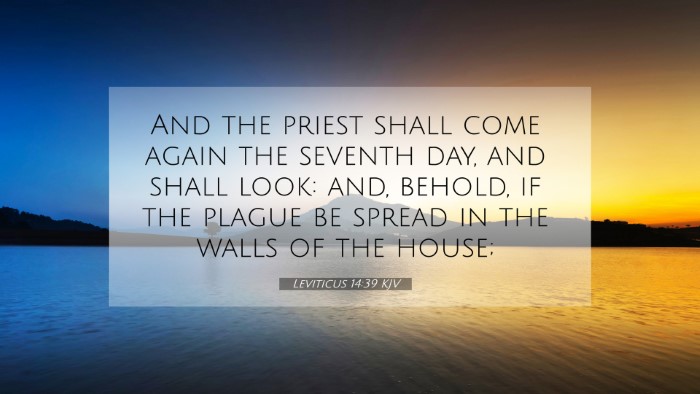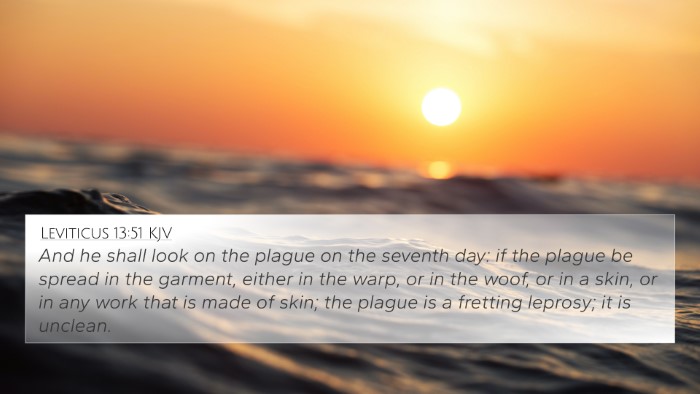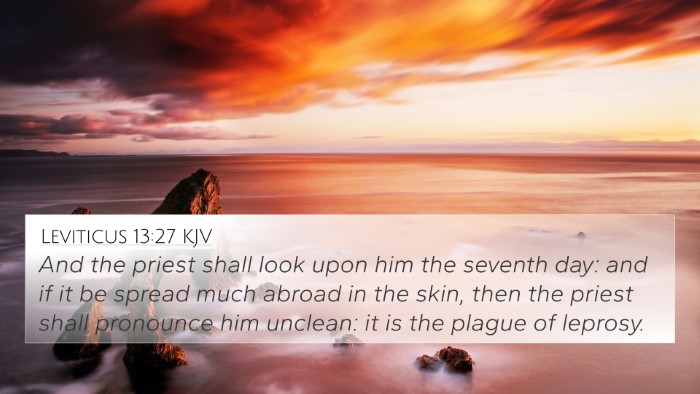Understanding Leviticus 14:39
Leviticus 14:39 states:
"And the priest shall look, and behold, if the plague be spread in the walls of the house."
This verse refers to the examination of a house for signs of a plague, an aspect of the broader laws regarding cleanliness, holiness, and health presented in the book of Leviticus. Below, we will explore various commentaries for deeper understanding.
Commentary Insights
Matthew Henry
Matthew Henry emphasizes the significance of the priest's role in discerning the faithfulness of God's covenant in the community. The examination serves as both a physical and spiritual cleansing, illustrating how sin, when left unchecked, can infiltrate the life of God’s people, akin to a plague in their midst.
Albert Barnes
Albert Barnes points out that this procedure highlights the importance of vigilance in maintaining spiritual and physical integrity. The priest’s inspection is necessary to ensure that the community remains pure and the presence of any infectious phenomena is dealt with promptly, reflecting the need for accountability within the congregation.
Adam Clarke
Adam Clarke elaborates on the theological implications of the term "plague." The disease typifies sin, which has a corrupting influence akin to a dreaded infection. Clarke underlines how the priest’s inspection of household contamination parallels the scrutiny we must apply to our spiritual lives to prevent moral decay.
Bible Verse Cross-References
The following Bible verses provide valuable cross-references that relate to Leviticus 14:39, enhancing our understanding of its context and significance:
- Exodus 12:15: Discusses the importance of removing leaven, which symbolizes sin, from their houses.
- Numbers 5:2-3: Commands the isolation of individuals with known contamination, reflecting the seriousness of purity.
- 2 Kings 15:5: Highlights the role of the priest in discerning moral and spiritual decay.
- Psalms 51:7: Appeals to God for cleansing, demonstrating the desire for both internal and external purity.
- Matthew 23:27: Christ comments on external appearances versus internal corruption, mirroring the themes of Leviticus.
- Revelation 21:27: Shows the ultimate purification as God’s New Jerusalem will exclude anything impure, connecting the theme of holiness across scripture.
- Romans 12:1-2: Encourages believers to present themselves as living sacrifices, drawing parallels to the concepts of cleanliness and holiness in Leviticus.
Thematic Connections
Several themes emerge from Leviticus 14:39 which carry through the biblical narrative. Among the most prominent are:
- Spiritual Cleansing: Just as a house must be inspected for physical blemishes, believers must conduct soul-searching introspection.
- Community Accountability: The priest's inspection reflects communal responsibility in maintaining purity among God’s people.
- Symbol of Sin: The plague serves as a metaphor for the spiritual diseases that can corrupt relationships with God and others.
Tools for Bible Cross-Referencing
For those interested in engaging further with cross-referenced themes in the Bible, the following tools can enhance your study:
- Bible Concordance: A comprehensive resource for locating scripture passages and their connections.
- Bible Cross-Reference Guide: A tool that facilitates easy navigation among related scripture.
- Bible Reference Resources: Various printed and online resources that compile extensive lists of interrelated texts.
- Bible Chain References: A method that links verses from different books based on thematic elements.
Conclusion
Understanding Leviticus 14:39 requires a multifaceted approach through comparative Bible verse analysis. By examining insights from esteemed commentaries and engaging with inter-Biblical dialogue, one uncovers profound themes that link the Old Testament’s principles of holiness and cleanliness with contemporary spiritual living.







